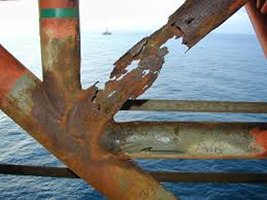Asset Integrity

Price
Add to Cart
Overview
This ebook shows how the topics of Asset Integrity and Mechanical Integrity are an integral part of a process safety management (PSM) program. Topics discussed include the development and use of engineering standards, the principles of inherent safety and the different types of safety systems (active and passive) and RAGAGEP (recognized and generally accepted good engineering practice).
RAGAGEP
With regard to acceptable risk in the context of engineering design, a term that is sometimes used is ‘Recognized and Generally Accepted Good Engineering Practice’ (RAGAGEP). Such a practice establishes engineering performance criteria based on established codes, standards and recommended practices.
The development of RAGAGEPs for a particular company or facility includes the following steps:
- Identify the relevant federal, state, county and local regulations;
- Identify local codes and standards (such as building and fire codes);
- Identify the pertinent industry consensus standards;
- Review all of the above with legal, safety and environmental staff;
- Incorporate proprietary experience and standards; and
- Finalize with engineering judgment.
The final step - the use of engineering judgment - can be hard to define. Basically, such a judgment should determine if the RAGAGEP ‘makes sense’ in the context in which its use is proposed, whether safety or environmental performance is truly enhanced, and whether regulatory exposure is reduced. A final and crucial step, in a RAGAGEP program is to ensure that it is kept up to date as new standards, regulations and practices are issued and adopted.
RAGAGEP can be used to provide a basis for regulatory action (or the defense to such an action). For example, EPA Risk Management Plan (RMP) General Duty clause provides very little guidance regarding the management of ‘extremely hazardous substances’. If the EPA were to cite a company under this clause, the company could defend itself by showing that it was following recognized good engineering practices.
Table of Contents
Introduction
Engineering Standards
Inherent Safety
Eliminate
Remove Equipment
Remove People
Minimize
Substitute
Moderate
Equipment Modification
Spacing
Underground Location
Simplify
Applying Inherent Safety
Law of Unintended Consequences
Serendipity
Undesirable Outcome
Original Situation Worse
Passive Safety Systems
Active Safety Systems
Administrative Safety Systems
Safety Critical Items
Priority 1
Priority 2
Priority 3
RAGAGEP
